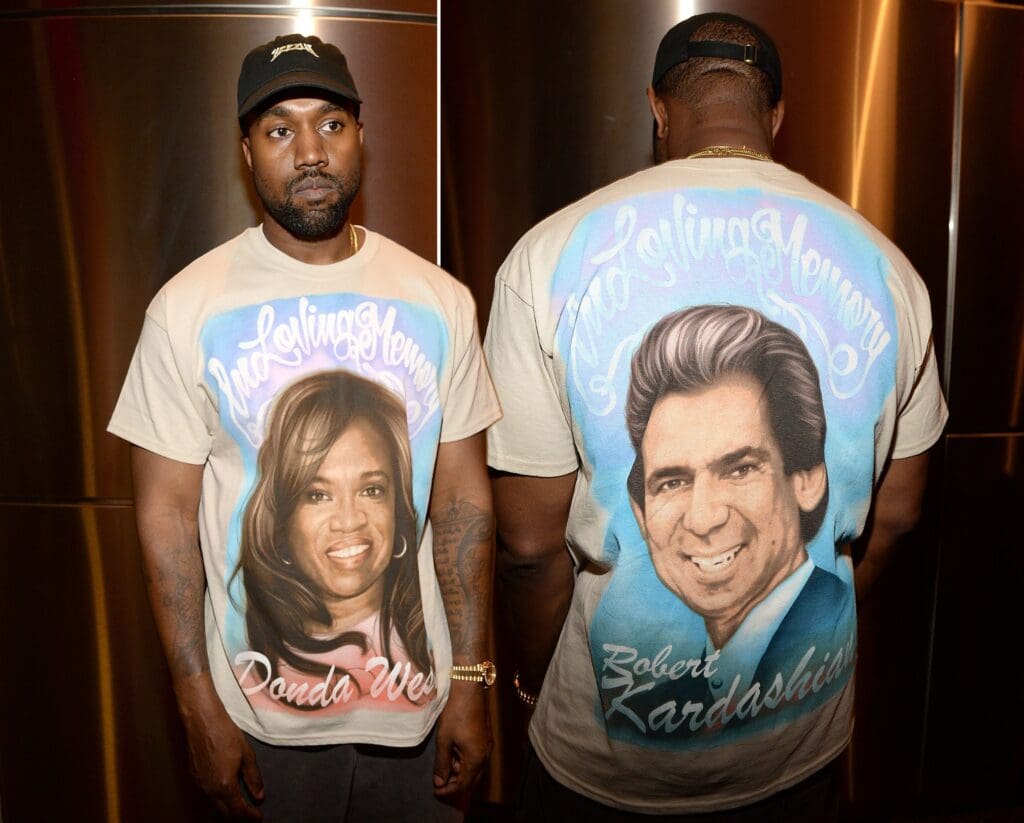Within the changing landscape of pop culture and fashion, trends and styles ebb and flow. Among these cultural motifs lies the enduring charm of airbrushed T-shirts, a medium that has undergone a notable revival in recent times, with memes, realism, cartoons, and any other image you can imagine being airbrushed on tees by independent artists.
But, while this art form was once reserved for county fairs and hip-hop funerals, it’s now becoming part of the high fashion aesthetic. And, since airbrush kits are fairly affordable and you can learn how to use one with YouTube tutorials and plenty of other free resources, anyone can start making their own airbrushed tees.
The Modern Manifestation
In February 2016, rapper Kanye West orchestrated a momentous event to debut his album The Life of Pablo. Amidst the glitz and glamour of the affair, one particular item stole the spotlight: an airbrushed t-shirt bearing portraits of West’s late mother, Donda West, and Kim Kardashian’s father, Robert Kardashian. Designed by artist Alan Pastrana, this commemorative tee became an instant sensation, available exclusively for purchase on the night of the event at a surprisingly accessible price point of $40.

Similarly, during the unveiling of his Spring 2017 collection, fashion designer Alexander Wang presented special airbrushed t-shirts to the models, affectionately dubbed the “wang squad.” Crafted by New York-based artist Noel, these bespoke garments added a distinctive flair to the runway, garnering attention alongside Wang’s coveted apparel.
Meanwhile, a groundbreaking collaboration between American retailer Gap and artist Heron Preston introduced a sweatsuit adorned with an airbrushed illustration of a bald eagle, accompanied by the slogan “The Gap is an iconic American brand for the people.” This unexpected partnership heralds a departure from Gap’s traditional aesthetic, signaling a bold foray into urban streetwear. Available for pre-order on Preston’s website, this exclusive ensemble commands a price tag of $500, underscoring its status as a coveted collector’s item.
Airbrushing Through History
To fully appreciate the resurgence of airbrushed t-shirts, it’s essential to delve into their rich history. While the exact origins of airbrushing remain shrouded in mystery, its roots can be traced back to the late 19th century, when the first patent for a modern airbrush device was filed by Charles Burdick in Great Britain. Initially met with skepticism by traditional art circles, airbrushing found its niche in advertising and photo retouching, offering a revolutionary means of creating hyper-realistic images with unparalleled precision.

Throughout the 20th century, airbrushing flourished in various industries, including advertising, special effects makeup, and taxidermy. However, it was in the realm of fashion that airbrushed t-shirts truly made their mark. From county fairs and mall kiosks to the burgeoning hip-hop and street cultures of the late 20th century, airbrushed tees became emblematic of individuality and self-expression.
The Influence of Icons
Central to the proliferation of airbrushed t-shirts was the emergence of pioneering artists like the Shirt Kings, a collective of graffiti artists who transitioned from urban murals to fabric canvases. Edwin “Phade” Sacasa, Rafael “Kasheme” Avery, and Clyde “Nike” Harewood revolutionized the intersection of street art and fashion, creating iconic designs that captured the essence of hip-hop culture. Their distinctive style, characterized by vibrant colors and bold graphics, became synonymous with the golden age of hip-hop, adorning the likes of Jay-Z and Queen Latifah.

In addition to its cultural significance, airbrushed t-shirts have also served as poignant memorials, commemorating the lives of loved ones who have passed away. From Kanye West’s tribute to his late mother to Drake’s homage to Selena, these personalized garments are all about artistic expression.
A Rejection of Fast Fashion
Amidst the proliferation of fast fashion and mass-produced apparel, the resurgence of airbrushed T-shirts represents a counter-cultural movement, a rebellion against homogeneity and conformity. As chain stores inundate the market with disposable clothing, consumers seek alternatives that offer individuality and authenticity. Customization has emerged as a prevailing trend, as people yearn for garments that reflect their unique identities.

Furthermore, the resurgence of airbrushed t-shirts reflects a broader nostalgia for the 1990s, a decade defined by its eclectic fashion and cultural vibrancy. In an era dominated by fast fashion giants like Zara and H&M, airbrushed tees offer a welcome departure from the mainstream, a testament to the enduring appeal of artisanal craftsmanship.
The Bottom Line
In conclusion, the resurgence of airbrushed t-shirts serves as a testament to the endurance of artistic expression and individuality in an increasingly homogenized world. As we navigate the ever-evolving landscape of fashion and culture, these 1-of-1 garments stand as beacons of creativity, offering a canvas for personal narratives, aesthetic experimentation, and funny nonsense.
From the streets of hip-hop culture to the runways of high fashion, airbrushed t-shirts have transcended boundaries and defied categorization, capturing the imaginations of diverse audiences. Their appeal lies not only in their visual aesthetics but also in the stories they tell and the emotions they evoke.
Looking ahead, it’s evident that airbrushed t-shirts will continue to hold a special place in the hearts of fashion enthusiasts and collectors alike. Their timeless appeal transcends fleeting trends, serving as symbols of self-expression and creative freedom.











